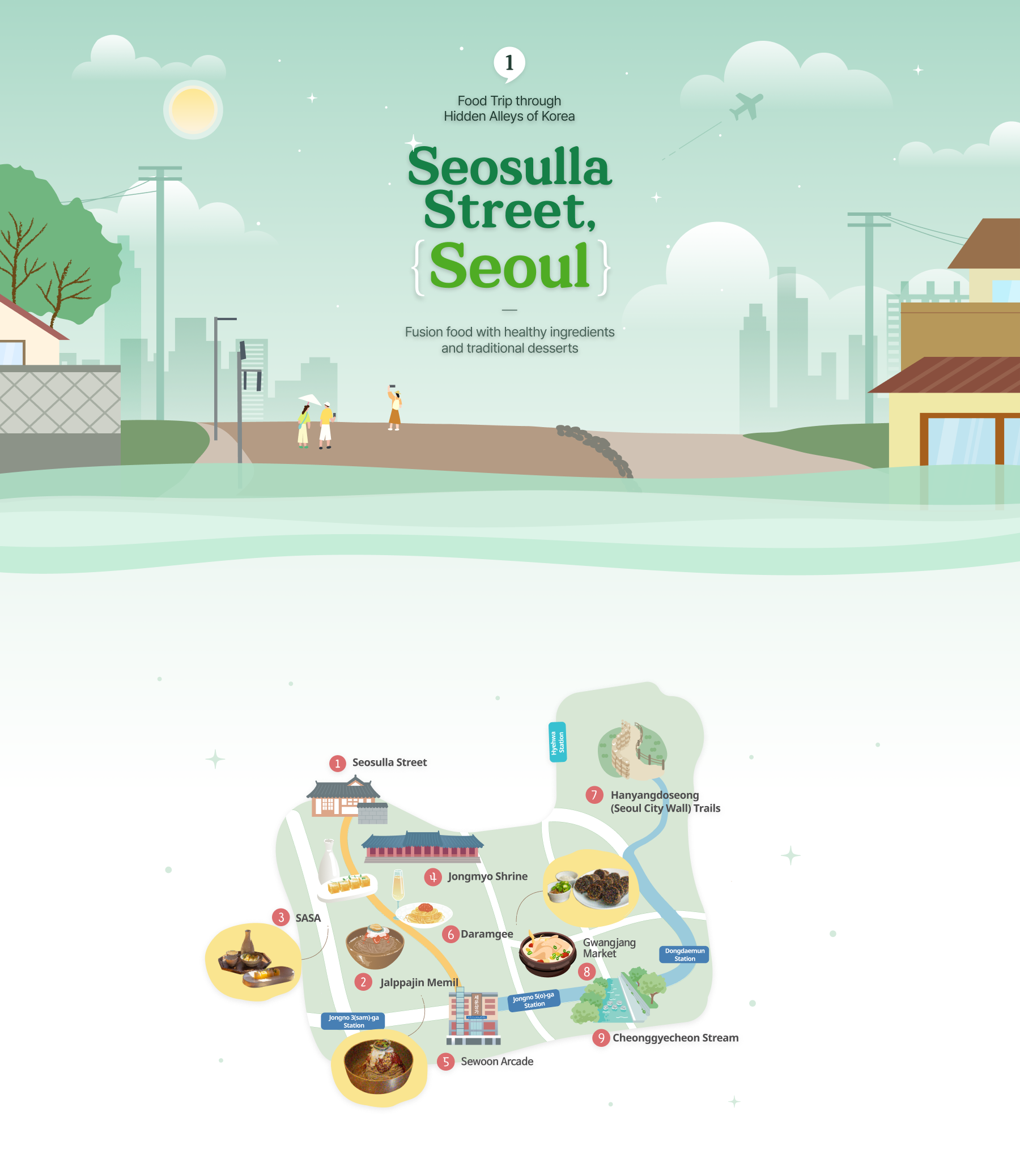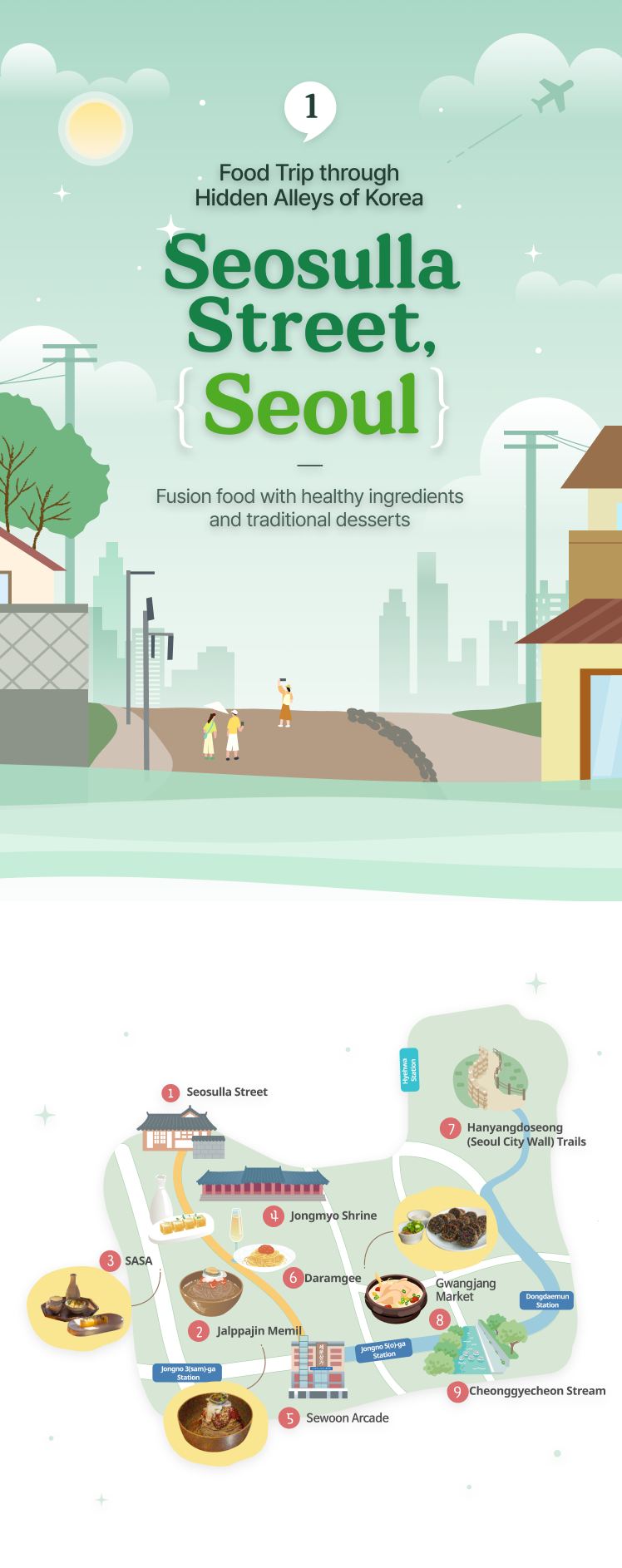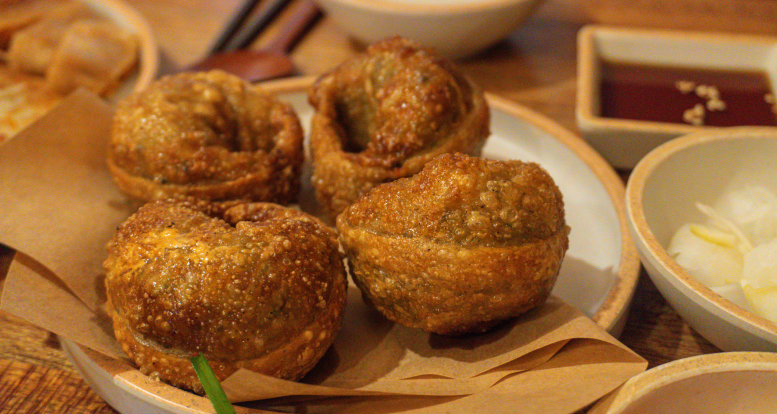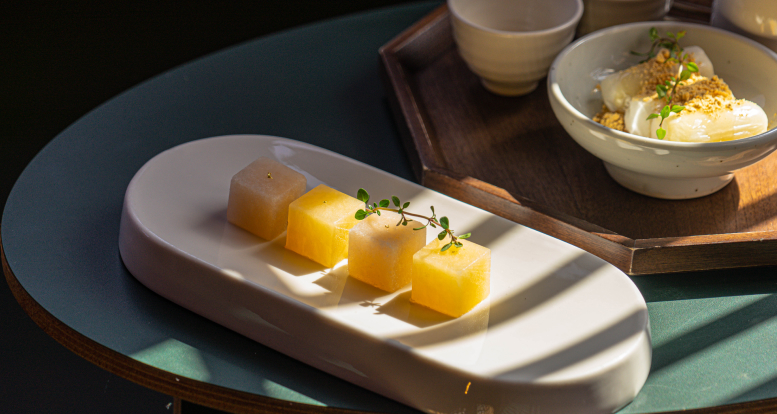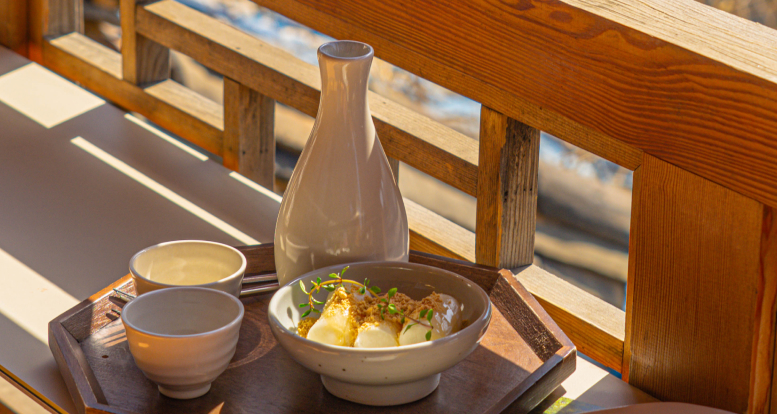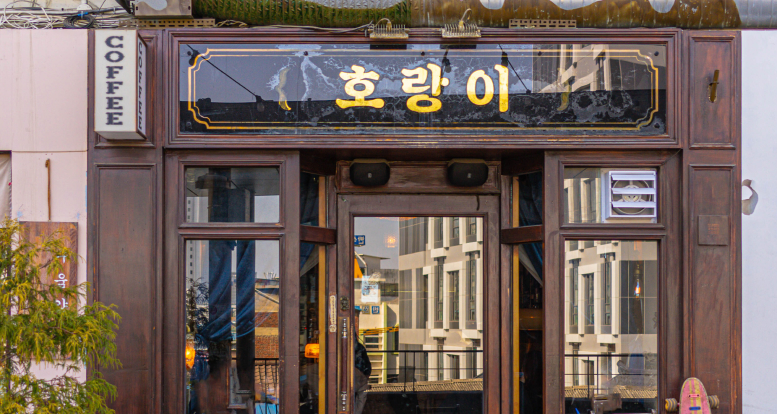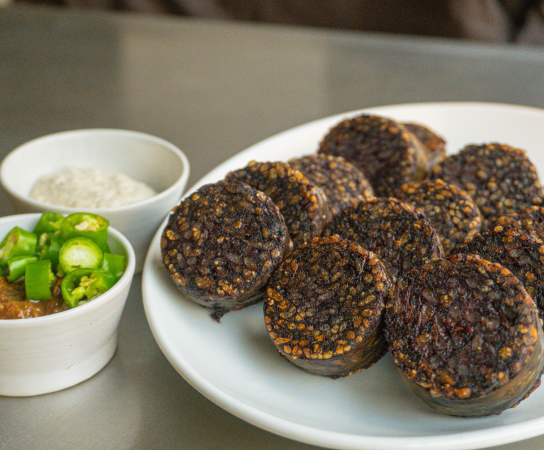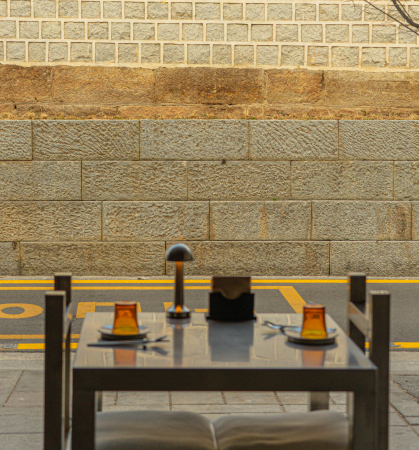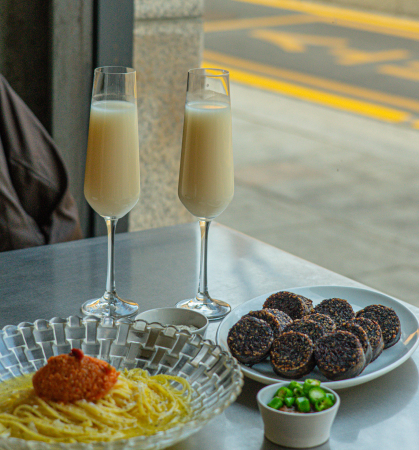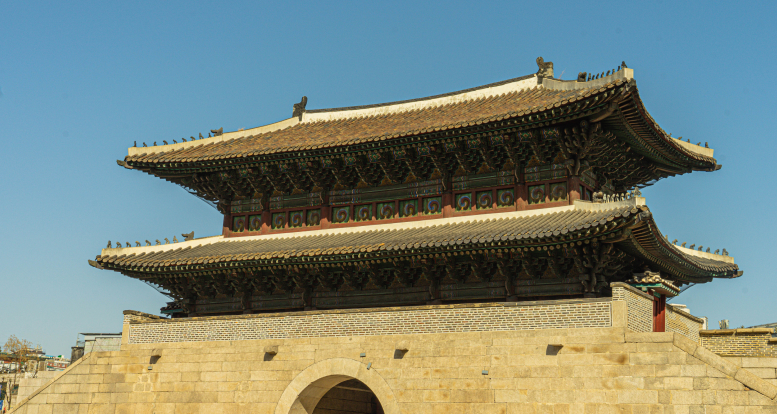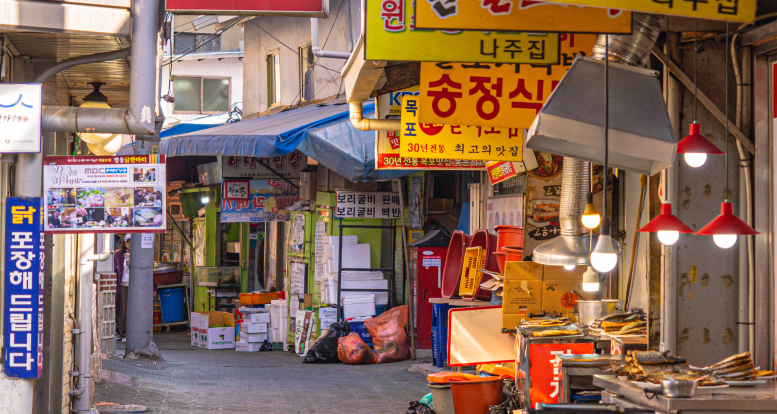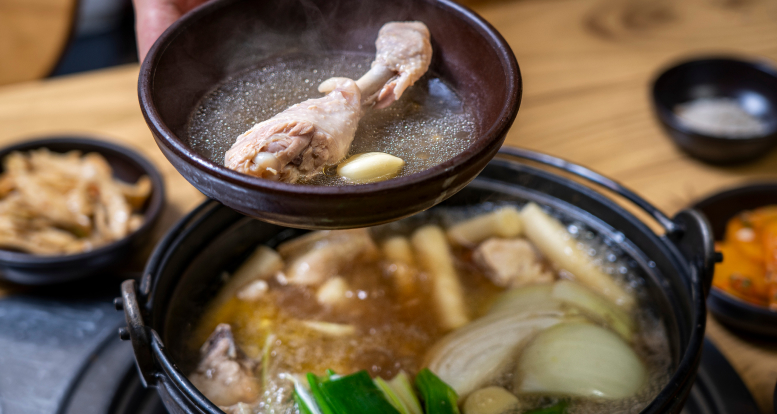As the capital of Korea, Seoul, with Korea’s rapid economic development is full of things to see. The high risers and city lights coexists with traditions imbued into the alleys hidden across the city.
To explore the traditional side of Seoul, start at Seosulla Street and make a circle along the Cheonggyecheon Stream. This road will lead you to the "true" heart of Seoul, where traditions built up over thousands of years meet with today’s culture in harmony. During the 500-year Joseon* period, Seoul was known under a different name, "Hanyang."
The old city center around the royal palaces of Gyeongbokgung and Changdeokgung is now home to a collection of hanok villages that form the most traditional of all tourist sites in Seoul.
As a result, Gyeongbokgung and Changdeokgung Palaces draw a large audience every day of the week. Seosulla Street is a charming local secret where traditions meet today’s sensibilities.
*Joseon: A kingdom ruled by the Yi family for 27 generations spanning approximately 518 years, from 1392 to 1910
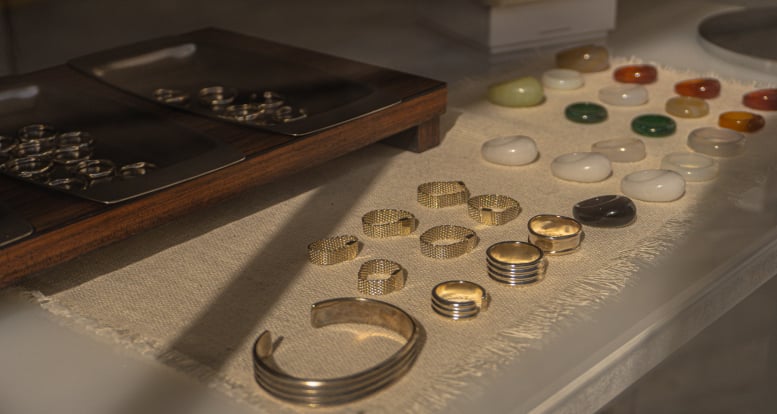 Jewelry craft shops at Seosulla Street
Jewelry craft shops at Seosulla Street
Seosulla Street is an 800-m-long alley along the stone walls of Jongmyo Shrine. It was originally a patrol route for the "Sulla" force, a night watch force that was responsible for policing in the Joseon period.
Today, this street is home to restaurants and cafés housed in renovated hanok, traditional residential buildings of the Joseon period. As a Craft Street* established by the Seoul city government, Seosulla Street also has jewelry craft shops hidden across the alleyways in the neighborhood, so it is worth walking slow to explore the neighborhood more thoroughly.
*Craft Street: A cultural street initiative established by the Seoul city government to bring together the traditions of jewelry trading at Jongno Jewelry Shopping Street and the creative craft culture among the younger generations

